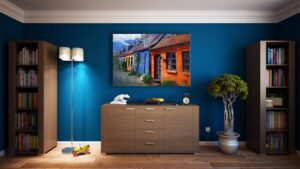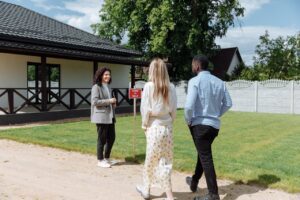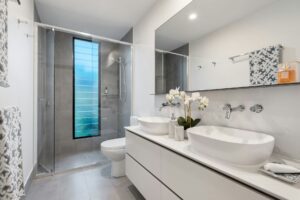Photography is a real estate agent’s best friend. Given that nine out of ten buyers start their house hunt by looking at online listings, your real estate photography has a big job to do. Are your current photographs up to par?
In many cases, HDR photography is the best bet for capturing home interior shots. HDR photography creates images that are far closer to what the human eye would see than most forms of photography–which is exactly what you need in real estate.
How and why should you start using HDR real estate photography to enhance your listings?
Read on to find out why HDR photos make the best real estate photos and how you can start capturing HDR photos this year.
What Is HDR Photography?
HDR stands for “high dynamic range.” Specifically, this refers to the dynamic range of lighting in HDR photography.
HDR photography produces a richer dynamic of lighting and contrast in an image. The photograph adjusts and adapts to complex lighting and deep contrast in a similar fashion that the human eye would.
For example, imagine that you walk into a room that is dim on one side but well-lit on the other due to bright windows. This range of light may take some adjusting, but after a few moments, you’ll be able to see the dim side of the room and the bright side of the room in near-equal measure. An HDR photograph will produce a similar effect, while a standard photograph would either fail to capture the dim side of the room or make the bright side of the room look washed-out–or both.
When Is HDR Photography Most Beneficial to Real Estate Professionals?
HDR photography is almost always beneficial to real estate photography. However, if you have a limited budget or tools and can only use it in certain circumstances, that’s okay, too. Let’s talk about when HDR photography is going to make the biggest difference to your real estate photos.
As we described earlier, HDR photography has the ability to balance out a room that has multiple light levels. As a real estate agent, you probably know that this is what you’ll find in most of the rooms in a home or apartment. While you may not need HDR photography for exterior shots, you’ll likely benefit from HDR photography for interior shots, especially when following the cardinal rule of relying on natural lighting.
What Are the Benefits of HDR Real Estate Photography?
So you understand that HDR photography can make a huge difference when taking photos of a home’s interior. This is primarily because it captures a more dynamic range of light and contrast than normal photos.
However, in doing so, HDR photography provides a richness and depth to the rest of your image. Let’s take a closer look at how this works and why it’s a benefit to real estate photographers and agents.
Detail
Standard photography relies on one exposure to capture an image. HDR photography pulls in multiple exposures as part of its light-adjustment. Another thing that occurs during this process is that detail is captured more vividly.
That means that without a great strain or post-production exposure adjustment, viewers of your photography will be able to discern more detail in each shot. This is crucial in real estate photography because the details of a home, from light fixtures to crown molding, are what makes a home unique.
Texture
Falling in love with a home is a full sensory experience. Of course, photography can’t capture the way a home smells or a home feels. With HDR photography, however, you can give a much better sense of the deeper textures throughout a room.
Think of the grain of a hardwood floor, the marbling of a stone countertop, and the lushness of carpeting. Think of the angles and shapes of a stained glass window or smoothness of freshly painted walls. All of these textures reveal the state of a property and its desirability for the buyer.
With HDR photography, your viewers will feel like they can reach out and touch every corner of a room.
Balance
We can’t overemphasize how important it is to strike a balance between light and shadow in real estate photography. Natural lighting is the most flattering to a property and the most gentle to photograph, but that doesn’t always translate to a perfect photo.
HDR photography solves the problem of photographing difficult spaces. You won’t have to test out natural-looking studio lighting or other expensive pieces of equipment. You won’t have to overexpose your photos in post-production, leading to an inauthentic-looking photo.
How Can You Incorporate HDR Photography Into Your Real Estate Business?
In order to take HDR photography, you’ll need three things. The first is a high-quality DSLR camera that has a bracketing-mode setting built in. The second is photo editing software that will allow you to merge your bracketed shots into an HDR composite.
The third is skill. While a good photographer who works in standard modes would probably do well with HDR photography, experts like the ones at Matterport are better equipped to produce professional photos. They have the knowledge and the equipment to create exceptional photos every time.
Give Buyers a Better Look With HDR Real Estate Photography
HDR real estate photography is changing the way buyers interact with online listings. Give your potential buyers a more immersive experience with HDR photos that capture images much like the human eye does.
Looking for more ways that technology is improving and shaping the real estate industry today? Take a look around to stay caught up on what’s going on in the digital age.









